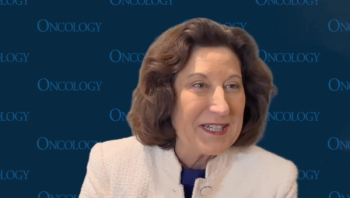
Oncology NEWS International
- Oncology NEWS International Vol 15 No 5
- Volume 15
- Issue 5
Telephone Often Delivers News of Breast Cancer Diagnosis
A survey of 121 breast cancer patients attending a breast cancer clinic found that 59% had received their "bad news" diagnosis over the telephone (mainly in their local area). Brianna J. Crawford, research coordinator at the Breast Diagnostic and Cancer Clinic, Mayo Clinic, Rochester, Minnesota, reported the study results in a poster session at the American Psychosocial Oncology Society (APOS) Third Annual Conference (P14-3).
AMELIA ISLAND, FloridaA survey of 121 breast cancer patients attending a breast cancer clinic found that 59% had received their "bad news" diagnosis over the telephone (mainly in their local area). Brianna J. Crawford, research coordinator at the Breast Diagnostic and Cancer Clinic, Mayo Clinic, Rochester, Minnesota, reported the study results in a poster session at the American Psychosocial Oncology Society (APOS) Third Annual Conference (P14-3).
The "good news," she said, is that the women were not overly distressed to receive their diagnosis this way. "All the guidelines say not to do it over the phone, but in our study, patient satisfaction did not really differ at all between people who received their diagnosis over the phone vs people who received it in a face-to-face encounter," she said.
The women were asked about their experience of receiving their diagnosis in a 35-item questionnaire from 1 to 54 days after learning they had breast cancer. The majority said they got the news from general physicians, followed by surgeons, radiologists, nurses, physician's assistants, gynecologists, breast specialists, other specialists, family members, and, lastly, secretaries. Patients described their relationship with the person who gave them their diagnosis as excellent (21%), good (25%), satisfactory (26%), inadequate (7%), and poor (5%). Nearly 15% said they did not know the person well enough to rate or describe the relationship.
The mean length of time spent on the telephone to disclose the diagnosis was 7.9 minutes, compared to 26.3 minutes for the face-to-face disclosure. Patient satisfaction was the same for both groups of women. "This is important to know, because all of the literature and patient-communication research out there right now is saying that we need to tell people face to face and stay close to them. But, in fact, what we are finding is that the news is being delivered by telephone all over the United States. Since that is the reality, we need to find out how to share the cancer diagnosis in the best way for the patient," Ms. Crawford said. While it should be noted that these findings highlight important new considerations for "breaking bad news" to patients, she said, the issue should be further explored via larger and population-based studies.
Patients frequently have to travel long distances to get a face-to-face diagnosis, so getting the news by phone may actually be better for them, she added. "For some women, it may be a good thing to be able to offer them the option of receiving that news at home, in a comfortable place, surrounded by friends or family. It might be more logical for them to receive it there," she said.
Articles in this issue
over 19 years ago
Genentech Files sBLA for Avastin for First-Line NSCLC Treatmentover 19 years ago
RFA Effective for Single, Small Hepatocellular Carcinomaover 19 years ago
New Imaging, ChemoRT Recommendations From NCCNover 19 years ago
Panitumumab Improves PFS in Advanced Colon Caover 19 years ago
Studies Question Watchful Waiting for Some Prostate Ca Ptsover 19 years ago
Growing Evidence Supports Stem Cell Hypothesis of Cancerover 19 years ago
FDA Approves New Every-3-Week Dosing for Aranespover 19 years ago
IND Submitted for CYT-500Newsletter
Stay up to date on recent advances in the multidisciplinary approach to cancer.















































































